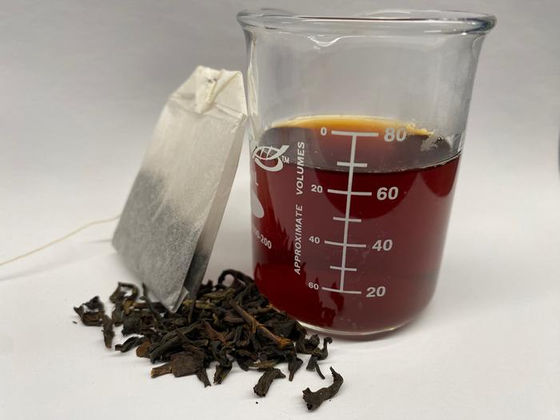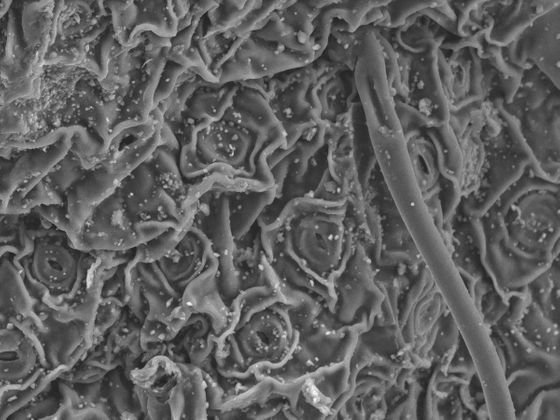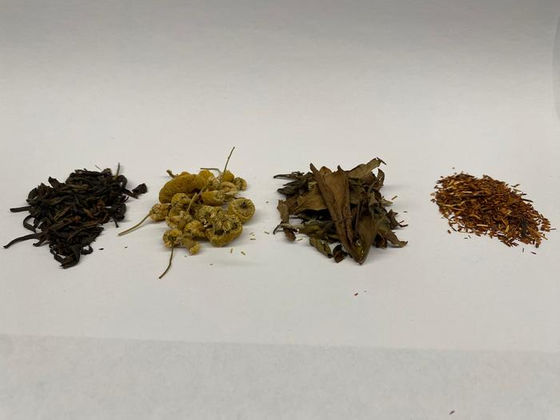It turns out that tea can remove harmful heavy metals from drinking water, even tea bags can be used

Japan is one of the few countries in the world where tap water is drinkable, but problems such as aging lead water pipes that have not been replaced
Brewing Clean Water: The Metal-Remediating Benefits of Tea Preparation | ACS Food Science & Technology
https://pubs.acs.org/doi/10.1021/acsfoodscitech.4c01030
Brewing tea removes lead from water | EurekAlert!
https://www.eurekalert.org/news-releases/1074361
Brewing tea removes lead from water - Ars Technica
https://arstechnica.com/science/2025/02/brewing-tea-removes-lead-from-water/
In a paper published in the peer-reviewed academic journal ACS Food & Science Technology on February 24, 2025, Vinayak Dravid, an adsorbent expert at Northwestern University, and his colleagues presented research focusing on the properties of tea leaves, which are widely used worldwide, as an adsorbent material.
'The aim of this study was not to suggest that people start using tea leaves as a water purifier, but to measure the ability of tea leaves to adsorb heavy metals. Quantifying this effect could highlight the unrecognized potential of tea consumption to passively contribute to reducing heavy metal exposure in people worldwide,' Dravid said.
To conduct their research, Travitt and his team investigated how the type of tea and the brewing method affected the absorption of heavy metals by tea leaves. Specifically, they analyzed the effects of common tea leaves, such as black tea, green tea, oolong tea, and white tea, made from the tea plant (Camellia sinensis), as well as herbal teas, such as chamomile tea and rooibos tea. They also examined the effect of brewing tea from leaves or using tea bags.

by
The experiments involved heating a water solution containing lead, chromium, copper, zinc and cadmium to just below boiling point, adding tea leaves and steeping them for various times, ranging from a few seconds to 24 hours, then straining the leaves and measuring the amount of metals remaining in the tea.
The results of the experiment demonstrated that brewing tea naturally adsorbs heavy metals such as lead and cadmium, effectively removing dangerous pollutants from beverages. The type of tea bag, not the type of tea leaves, is important for this effect, with cellulose tea bags, which are commonly used in tea bags, being the most effective. On the other hand, cotton and nylon tea bags hardly adsorb pollutants, and nylon tea bags were found to release microplastics.
It turns out that commercially available tea bags release millions to over a billion plastic particles per milliliter and are absorbed by human intestinal cells - GIGAZINE

One of the reasons tea removes heavy metals is because of its large surface area. Metal ions stick to surfaces, so the more surface area there is, the more effective they are, and cellulose, a natural, biodegradable material made from wood pulp, is a particularly effective adsorbent. Similarly, finely crushed black tea leaves were the most effective at adsorbing toxic metals because tea leaves become wrinkled during processing, opening up the pores and increasing their surface area.
'Cotton and nylon tea bags do very little to remove heavy metals from water,' said lead author Benjamin Shindell. 'And while nylon tea bags have already been criticized for releasing microplastics, the majority of tea bags used today are made from natural materials such as cellulose. They may release small particles of cellulose, but that's just fiber our bodies can process.'
Below is a photograph of the surface of a black tea leaf magnified 500 times using a scanning electron microscope.

by Vinayak P. Dravid Group/Northwestern University
The most important factor in the experiment was the steeping time of the tea; the longer the steeping time, the more toxic metals were removed. For example, it is estimated that simply steeping a teabag in a teacup for 3 to 5 minutes can remove about 15% of the lead from highly concentrated water containing 10 ppm of the metal.
Regarding the mechanism, Shindel explained, 'The longer the tea is steeped or the larger the surface area, the more effective it will be at removing heavy metals. Some people make tea in just a few seconds, but that doesn't get much removal. On the other hand, if you steep the tea for a long time, like iced tea, or overnight, most or almost all of the metals in the water will be removed.'
'Tea is a great way to get rid of toxic metals, and it's important to be aware of the effects of tea on your health,' said Dr. Stanley. 'Tea is a great way to get rid of toxic metals, and it's important to be aware of the effects of tea.'

by Vinayak P. David Group/Northwestern University
Any material with a large surface area is sufficient to capture heavy metal particles, so tea leaves or tea bags are not particularly good materials for absorbing metals. However, tea is important because it is a beverage enjoyed by people all over the world in various forms.
'What's special about tea is that it happens to be the most consumed beverage in the world,' said Shindel. 'You can get a similar metal-removal effect by grinding up any kind of material, but it's not always practical. But with tea, you don't have to do anything special. Just put the tea leaves in water, let it steep, and it will naturally remove the metals.'
Related Posts:







